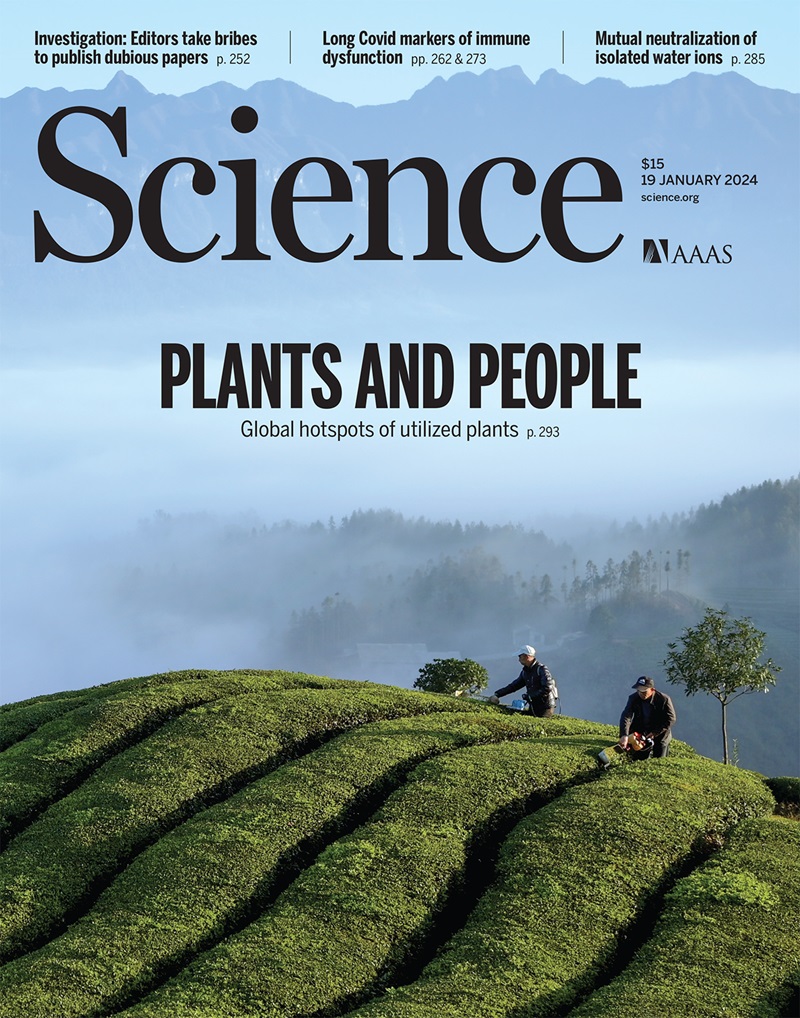Alpha and helion particle charge radius difference determined from quantum-degenerate helium
IF 44.7
1区 综合性期刊
Q1 MULTIDISCIPLINARY SCIENCES
引用次数: 0
Abstract
Accurate spectroscopic measurements of calculable systems provide a powerful method for testing the Standard Model and extracting fundamental constants. Recently, spectroscopic measurements of finite nuclear size effects in normal and muonic hydrogen resulted in unexpectedly large adjustments of the proton charge radius and the Rydberg constant. We measured the 23S→21S transition frequency in a Fermi gas of 3He with an order of magnitude higher accuracy than determined previously. Together with a previous measurement in a 4He Bose-Einstein condensate, a squared charge radius difference rh2 – rα2 = 1.0757(12)exp(9)theo fm2 was determined between the helion and alpha particle. This measurement provides a stringent benchmark for nuclear structure calculations.
由量子简并氦确定的α和氦粒子电荷半径差
可计算系统的精确光谱测量为检验标准模型和提取基本常数提供了有力的方法。最近,对正常氢和介子氢的有限核尺寸效应的光谱测量导致了质子电荷半径和里德伯常数意想不到的大调整。我们测量了3He费米气体中23S→21S的跃迁频率,精度比以前高了一个数量级。结合先前在4He玻色-爱因斯坦凝聚体中的测量结果,确定了helion和α粒子之间的平方电荷半径差rh2 - rα2 = 1.0757(12)exp(9)theo fm2。这一测量为核结构计算提供了严格的基准。
本文章由计算机程序翻译,如有差异,请以英文原文为准。
求助全文
约1分钟内获得全文
求助全文
来源期刊

Science
综合性期刊-综合性期刊
CiteScore
61.10
自引率
0.90%
发文量
0
审稿时长
2.1 months
期刊介绍:
Science is a leading outlet for scientific news, commentary, and cutting-edge research. Through its print and online incarnations, Science reaches an estimated worldwide readership of more than one million. Science’s authorship is global too, and its articles consistently rank among the world's most cited research.
Science serves as a forum for discussion of important issues related to the advancement of science by publishing material on which a consensus has been reached as well as including the presentation of minority or conflicting points of view. Accordingly, all articles published in Science—including editorials, news and comment, and book reviews—are signed and reflect the individual views of the authors and not official points of view adopted by AAAS or the institutions with which the authors are affiliated.
Science seeks to publish those papers that are most influential in their fields or across fields and that will significantly advance scientific understanding. Selected papers should present novel and broadly important data, syntheses, or concepts. They should merit recognition by the wider scientific community and general public provided by publication in Science, beyond that provided by specialty journals. Science welcomes submissions from all fields of science and from any source. The editors are committed to the prompt evaluation and publication of submitted papers while upholding high standards that support reproducibility of published research. Science is published weekly; selected papers are published online ahead of print.
 求助内容:
求助内容: 应助结果提醒方式:
应助结果提醒方式:


